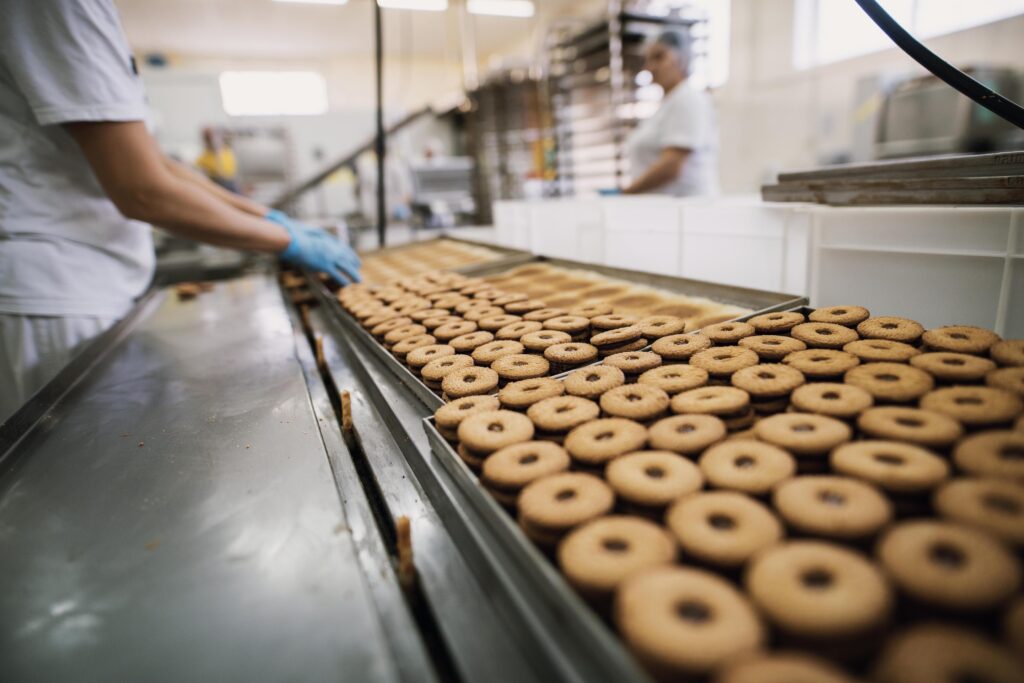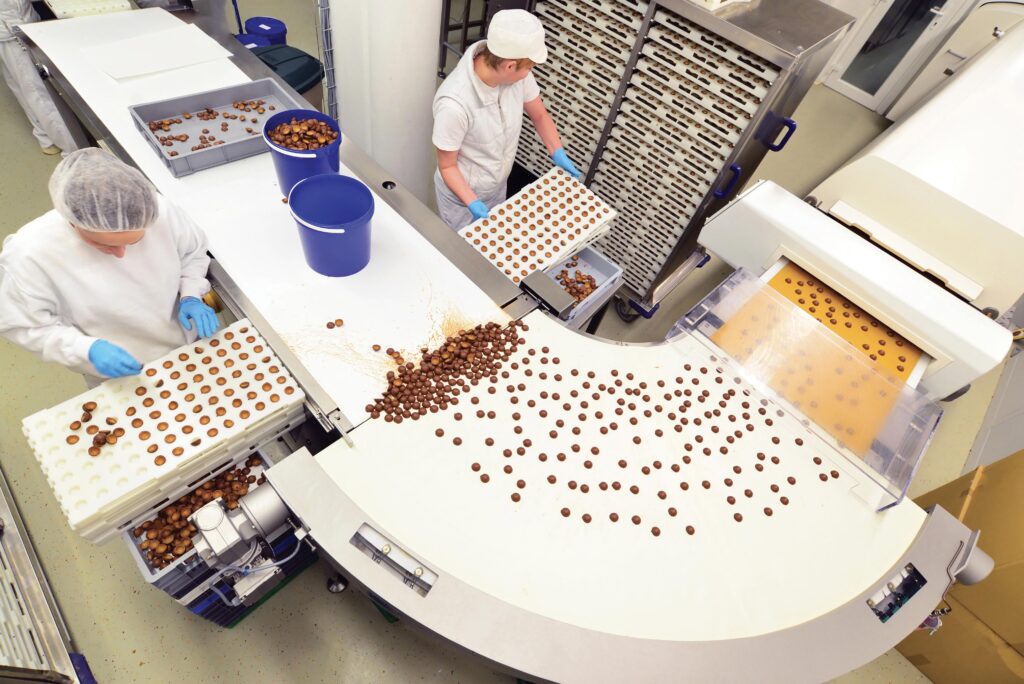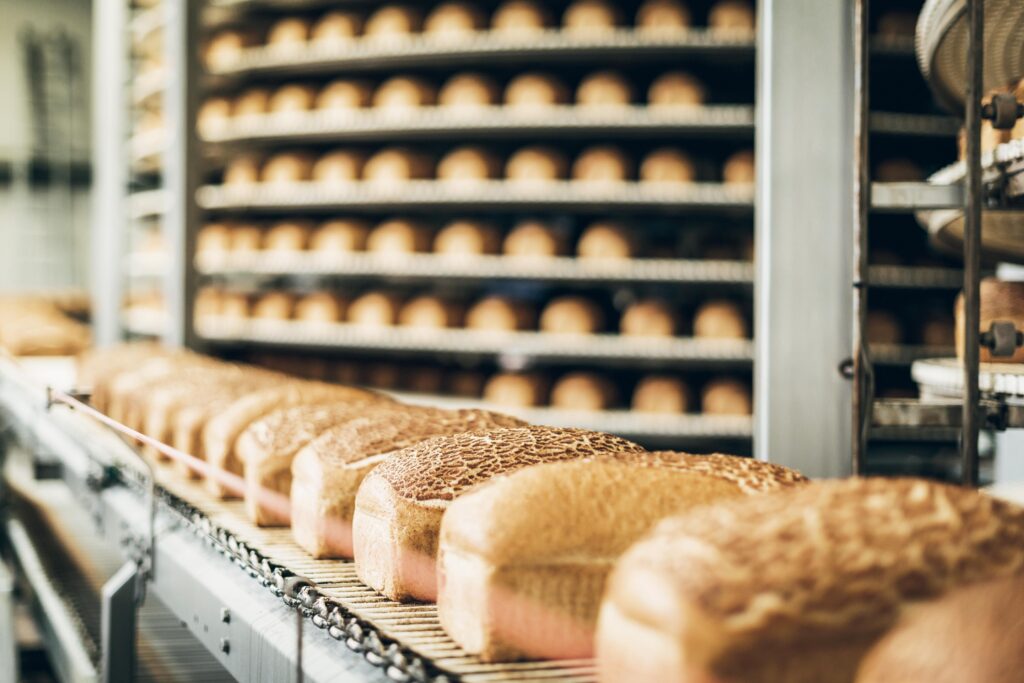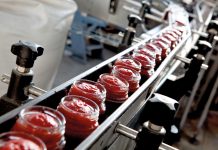 Food grade lubricants are products developed specifically for the food industry to reduce the risk of contamination during the production and processing process and to ensure maximum safety. This article investigates current uses and future prospects, classification and management and potential use concerns.
Food grade lubricants are products developed specifically for the food industry to reduce the risk of contamination during the production and processing process and to ensure maximum safety. This article investigates current uses and future prospects, classification and management and potential use concerns.
Lubricants have allowed for a significant improvement in the technology, by limiting the natural corrosive process of mechanical parts subjected to wear. For several years, they have been the subject of research and optimization of the formulation for specific applications, aimed at satisfying the need for quality and safety of manufacturers and consumers.
Their use represents an attractive challenge for manufacturers, who are called upon to consider the working and employment environment, the development of an appropriate risk assessment and a conscious procurement, based on supplier qualification, technical datasheets and related laboratory tests, avoiding using them as conventional ones, assessing the possible presence of allergens and the quantities needed to ensure the effectiveness of the application. Food processing takes place under varying environmental conditions for parameters such as temperature, humidity, chemical and microbiological agents, which require high-performance, efficient and safe equipment and machinery that is resistant to oxidation and overheating.
The risk of contamination should therefore be minimized by careful design of barriers and means that help reduce the possibility of exposure during normal processing and routine and extraordinary plant maintenance to highlight possible leaks from, for example, bearings, gearboxes and gears. Food-grade lubricants are derived from the need to emulate the role and functions of synthetic and mineral analogues starting from vegetable oils and additives that allow for reduced oxidation and resistance to heat and degradation, inhibiting the growth of bacteria, yeasts and fungi.
They are used because they minimize the risk of migration of dangerous substances into the food and do not alter the organoleptic profile of the food in the event of accidental contact. They therefore prevent possible withdrawals and recalls and ensure that the quality requirements agreed with the customer are met.
Classification
The NSF, an independent international non-governmental organization, operates a registration program for food-grade lubricants, defining them as follows:
- Category H1: Bio-lubricants with incidental food contact (so-called food-grade biolubricants as those covered in this Article). The maximum acceptable concentration in food is 10 ppm.
- Category H2: Bio-lubricants used on machinery and equipment where food contact is excluded.
- Category H3: Rust-free soluble lubricants.
Registration requires an assessment based on compliance with US Food and Drug Administration (FDA) standards (Reference: 21 CRF 178.3570) and a strict verification of traceability and of the information given on the label and on the technical datasheet. At the end of the process, the product is assigned a unique identification number, marked with a blue circle and H1 (in the case of food-grade products). The database of registered items is freely accessible and easily searchable on the Internet, providing the user with the necessary information, including the farm’s personal data and the assigned category, as well as the relevant documentation to be stored in case of audit.
The ISO 21469 standard is another type of voluntary certification that allows to guarantee the safety of these products, based on the type, formulation, intended use, and accuracy of information related to production and packaging. The achievement of this standard consists in providing a documented assessment of potential hazards and subsequent risk analysis and management, followed by an on-site inspection by an accredited and qualified body, with traceability verification and laboratory testing on the samples collected.
Unlike the NSF certification, this ISO is also recognized by animal feed, pharmaceutical and cosmetic companies, and includes a more stringent risk management as well as audits to verify the requirements, including compliance with shelf-life and maintenance of an up-to-date inventory. It is therefore up to the company which scheme to comply with, based o the adopted safety policy.
 Management
Management
Proper management of these products should follow the following steps:
- Choice according to the need within the process and type of production: Some substances may, for example, violate religious or disciplinary requirements of organic production.
- Consultation, revision and updating of the datasheet.
- Clear product labelling and safety data-sheet storage.
- Personnel training: Where, how and how much product to use, according to manufacturer’s instructions. An overdose may lead to the risk of dripping with related physical, biological or chemical contamination, while insufficient use may lead to increased friction between mechanical parts, with the possibility of erosion and subsequent release of fragments.
- Food sampling and laboratory analysis.
- Registration of application points to maintain traceability.
- Definition of storage method: Lubricants of vegetable origin are subject to a greater degree of deterioration than conventional lubricants.
Composition, trends, and perspectives
Food-grade lubricants have two main ingredients:
- The main component consists of mineral, synthetic or vegetable substances, and is responsible for the properties of the product.
- Mineral oils: They are derived from petroleum and are the most widely used. They can have different viscosity grades and have as their strong points the thermal stability and the resistance to oxidation.
- Synthetic oils: They are chemically processed and have higher thermal stability than mineral oils. They are often used in applications where extreme temperatures or heavy load conditions are present. This category includes polyalphaolefins (PAO), polyalkyleneglycols (PAG) and esters.
- Vegetable oils: They are biodegradable but have less thermal stability and oxidation resistance than the previous ones. The viscosity also depends on the type of plant from which they are extracted and can be affected by the temperature at which they are processed.
- Additives: They improve the characteristics of the lubricant. They include, for example, antioxidants to extend their life by preventing oxidation; anti-foam; antimicrobials; and anti-corrosive agents. Research is focusing on biological and ecological alternatives.
Vegetable oils are the focus of interesting studies because of their ecological sustainability, which requires serious considerations on how they are stored and disposed of. The main challenge in the use of these oils is their oxidation stability, which can lead to the formation of unwanted compounds and the accumulation of deposits in the environment. To overcome this problem, specific additives must be implemented in the formulation. Some materials may be incompatible and react chemically causing deformation or degradation of elastic or plastic components. This can lead to malfunctions or corrosion of seals and equipment or reduced performance over time. Vegetable-based oils often have lower operating temperatures than mineral or synthetic oils, so they may have limited use under extreme working conditions.
Table comparing vegetable oils
| TYPE OF OIL | PROS
|
CONS
|
| sunflower seeds | – Biodegradable
– Good oxidation resistance
|
– Low thermal stability
|
| soybeans | – Moderate viscosity
– Acceptable oxidative resistance – Ductility |
– Thermal stability
– Limited resistance at high temperatures
|
| rapeseed | – Thermal stability
– Oxidation resistance
|
– Not suitable for machinery with heavy loads and high pressure
|
| coconut | – Good lubricity
– Thermal stability
|
– High density at low temperatures
|
| palm | – Oxidation resistance
– Viscosity – Thermal stability
|
– Critical environmental impact
|
The widespread use of mineral lubricants in recent years has broadened the debate on environmental impacts, leading to the assessment of their alternatives. In this sense, the large quantities of cooking oil used are an interesting resource for biodegradability, despite its structure that affects and limits its tribological properties, unless a chemical modification (transesterification in particular) is carried out.
These oils, unlike those derived from petroleum, offer improved viscosity and high temperature tolerance, along with reduced volatility. Another factor that makes this oil attractive is its competitive price compared to other oils, and the possibility – more studied and tested – of use for the production of energy and the synthesis of biofuel, as well as its significant contribution to the circular economy by reducing costs and the share of carbon dioxide, and its effect on the climate and the environment.

Critical factors and Considerations
Currently, although estimated to be able to significantly replace petroleum products in particular, bio-derived food lubricants are more expensive than mineral and synthetic oils, and there are still doubts about the energy efficiency of their production, together with a poor hydrolytic stability that makes them poorly resistant to moisture, and a reduced fluidity at low temperatures.
We must also consider another factor: Extractions of natural oils vary according to climate, irradiation, temperature, and nutrients of the plants of origin; it is therefore difficult to have stable products in terms of characteristics, which are also influenced by the extraction technique.
Another scenario is non-edible oils, such as rubber and castor oils: They are inexpensive as raw materials but require specific technologies for their extraction and separation from unwanted impurities. Further studies will be needed to ultimately improve the properties of vegetable oils, focusing on the possible conversion of wild to commercial crops, genetic interventions to obtain specific functions, and the development of chemical modifications and blends to obtain stable, ecological, performing, and safe products.
References
Salih N., Salimon J.; A Review on New Trends, challenges and projects of Ecofriendly friendly Green Food-Grade Biolubricants; Biointerface research in applied chemistry; Volume 12, issue 1, 2022, 1185 – 1207; https://doi.org/10.33263/BRIAC121.11851207.



